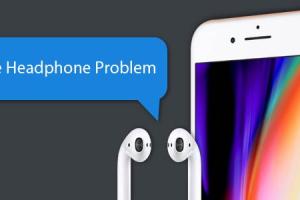8 Effective Ways to Fix iPhone Hearing Issues During Calls

-
Quick Links:
- 1. Check Volume Levels
- 2. Inspect the Ear Speaker
- 3. Restart Your iPhone
- 4. Update Your iOS Software
- 5. Remove Bluetooth Connections
- 6. Reset All Settings
- 7. Check for Physical Obstructions
- 8. Contact Apple Support
1. Check Volume Levels
One of the most common reasons for not hearing callers clearly is simply an issue with volume settings. Ensure that the call volume is turned up during a call by using the volume buttons on the side of your iPhone.
To check your volume levels:
- Make a call to someone.
- While on the call, press the volume up button.
- Ensure the volume bar shows high levels.
2. Inspect the Ear Speaker
The ear speaker on your iPhone can sometimes accumulate dust and debris, which can muffle sound. Inspect your device closely to see if the speaker is blocked.
To clean the ear speaker:
- Use a soft, dry brush to gently clean the area.
- A can of compressed air can also help remove stubborn debris.
3. Restart Your iPhone
Restarting your iPhone can resolve many temporary glitches that could be affecting sound quality. It’s a simple yet effective troubleshooting step.
To restart your iPhone:
- Press and hold the side button and either volume button until the slider appears.
- Drag the slider to turn off the iPhone.
- After the device is off, press and hold the side button again until you see the Apple logo.
4. Update Your iOS Software
Outdated software can lead to various issues, including audio problems. Make sure your iPhone is running the latest version of iOS.
To check for updates:
- Go to Settings.
- Scroll down and tap on General.
- Tap on Software Update.
- If an update is available, download and install it.
5. Remove Bluetooth Connections
If your iPhone is connected to a Bluetooth device, the sound may be routed to that device instead of the iPhone's speaker. Disconnect any Bluetooth devices to see if it resolves your issue.
To manage Bluetooth connections:
- Go to Settings.
- Tap on Bluetooth.
- Turn off Bluetooth or disconnect any connected devices.
6. Reset All Settings
If none of the above methods work, resetting all settings could help. This will return all system settings to their default without erasing your data.
To reset settings:
- Go to Settings.
- Tap on General.
- Scroll down and select Transfer or Reset iPhone.
- Tap on Reset and then select Reset All Settings.
7. Check for Physical Obstructions
Sometimes, physical obstructions like a case or screen protector can interfere with sound. Remove any accessories from your iPhone to check if they are the cause.
8. Contact Apple Support
If you’ve tried all the aforementioned steps and still can’t hear the caller, it might be time to reach out to Apple Support for further assistance. They can help diagnose potential hardware issues.
FAQs
1. Why can't I hear callers on my iPhone?
There could be several reasons, including volume settings, ear speaker obstructions, or software glitches.
2. How do I clean my iPhone ear speaker?
Use a soft brush or compressed air to gently clean the ear speaker area.
3. Can a software update fix audio issues?
Yes, updating to the latest iOS can resolve software-related audio problems.
4. What should I do if my iPhone is connected to Bluetooth but I can't hear callers?
Disconnect the Bluetooth device to ensure the audio is routed through the iPhone speaker.
5. Will resetting all settings erase my data?
No, resetting all settings will return system preferences to default without deleting your data.
6. How can I check my iPhone's volume levels?
During a call, use the volume buttons to adjust the call volume level.
7. What if my iPhone still doesn't work after trying all these steps?
If issues persist, it’s best to contact Apple Support for professional help.
8. Can physical obstructions like a case affect sound quality?
Yes, certain cases or screen protectors can block sound from the ear speaker.
9. Is it possible to fix an iPhone speaker without professional help?
Many audio issues can be fixed with the steps outlined in this article, but hardware problems may require professional assistance.
10. How do I know if my iPhone needs a hardware repair?
If all troubleshooting steps fail and you notice physical damage, it may require a hardware repair.
Random Reads
- How to respawn ender dragon minecraft
- How to get darkrai in pokemon platinum
- How to test a battery charger
- How to test a thermocouple
- Mastering the poke radar
- Mastering the pacifist run in undertale
- How to make money in stick rpg
- How to make money fast bloxburg
- How to protect stainless steel
- How to stop mirroring